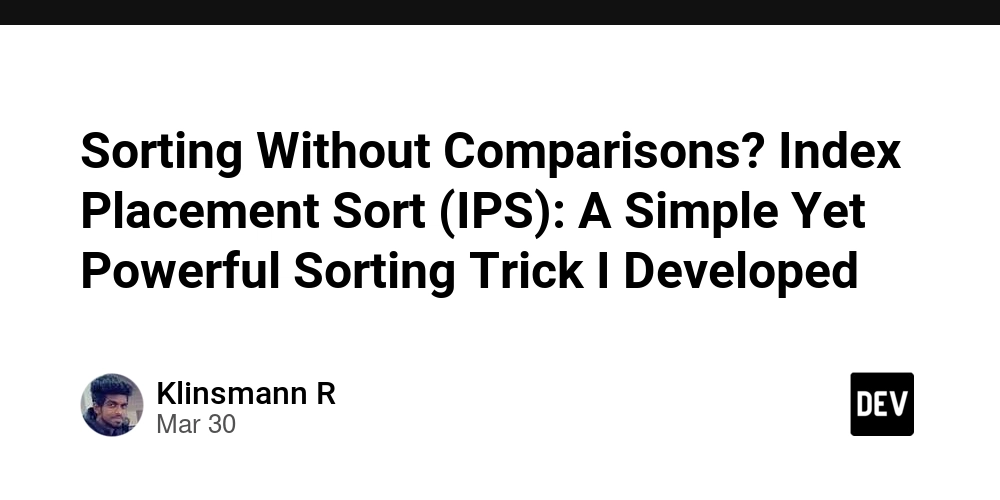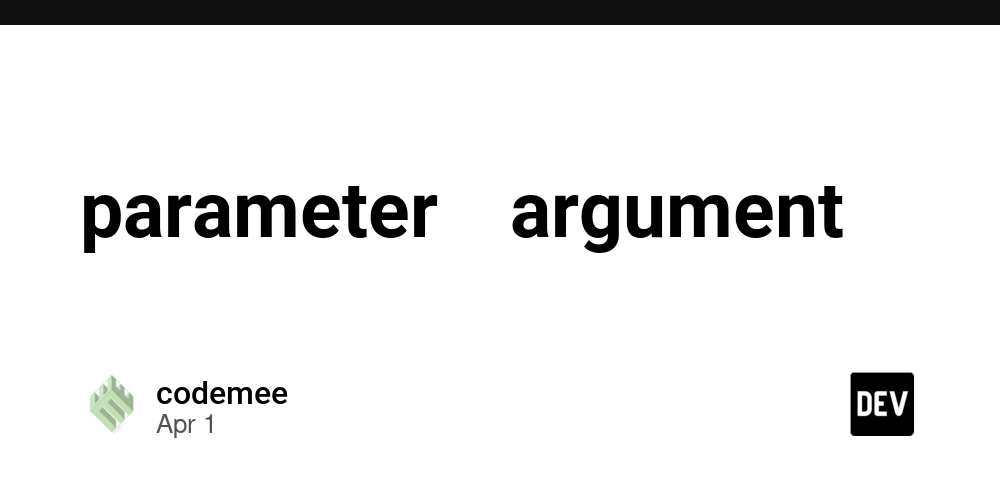Sorting Without Comparisons? Index Placement Sort (IPS): A Simple Yet Powerful Sorting Trick I Developed
Sorting algorithms are the backbone of efficient data processing. While traditional sorting methods rely on comparisons (like QuickSort or MergeSort), I recently stumbled upon a different approach—one that places elements directly in their correct position without explicit comparisons. This inspired me to develop what I call Index Placement Sort (IPS), a sorting technique that is blazing fast for certain types of data. As the inventor of this method, I believe it offers a unique perspective on how sorting can be optimized for specific use cases. How Index Placement Sort (IPS) Works The idea is simple: Create a large enough vector initialized with zero (or -1 for better handling). Use each element as an index and place it directly in the array. Iterate over the array and print only the non-zero (or non-negative) values. IPS in Action #include #include using namespace std; int main() { int arr[] = {5, 8, 2, 1, 3, 6}; int n = 6; vector sorted_arr(20000, -1); // Use -1 to mark empty slots for(int i = 0; i < n; i++) { if(arr[i] >= 0) // Ensure no negative indices sorted_arr[arr[i]] = arr[i]; } for(auto x : sorted_arr) { if(x != -1) cout

Sorting algorithms are the backbone of efficient data processing. While traditional sorting methods rely on comparisons (like QuickSort or MergeSort), I recently stumbled upon a different approach—one that places elements directly in their correct position without explicit comparisons.
This inspired me to develop what I call Index Placement Sort (IPS), a sorting technique that is blazing fast for certain types of data. As the inventor of this method, I believe it offers a unique perspective on how sorting can be optimized for specific use cases.
How Index Placement Sort (IPS) Works
The idea is simple:
Create a large enough vector initialized with zero (or -1 for better handling).
Use each element as an index and place it directly in the array.
Iterate over the array and print only the non-zero (or non-negative) values.
IPS in Action
#include
#include
using namespace std;
int main() {
int arr[] = {5, 8, 2, 1, 3, 6};
int n = 6;
vector sorted_arr(20000, -1); // Use -1 to mark empty slots
for(int i = 0; i < n; i++) {
if(arr[i] >= 0) // Ensure no negative indices
sorted_arr[arr[i]] = arr[i];
}
for(auto x : sorted_arr) {
if(x != -1)
cout << x << " ";
}
return 0;
}
Output:
1 2 3 5 6 8
Why is IPS Special?
Unlike traditional sorting algorithms, IPS has unique properties:
✅ Time Complexity: O(n + k) (where n = number of elements, k = max value in the array)
✅ No Comparisons: No if(arr[i] > arr[j]) swap(arr[i], arr[j]) like in normal sorting
✅ Super Fast for Small Ranges: Perfect when numbers are within a known range (e.g., 0–20,000)
✅ Ideal for Unique Integer Datasets: Works best when elements are distinct and non-negative
How IPS Compares to Other Sorting Algorithms
IPS has advantages over several traditional sorting algorithms:
Faster than QuickSort (O(n log n)) when dealing with constrained value ranges.
More efficient than MergeSort (O(n log n)) for datasets with a known maximum value.
Similar to Counting Sort but with a simpler implementation.
Outperforms Bubble Sort, Selection Sort, and Insertion Sort in almost all cases.
However, Radix Sort and Counting Sort might be better alternatives in cases where IPS would consume too much space.
Limitations of IPS
❌ Cannot Handle Negatives (Without Modification): Since it uses numbers as indices, negative numbers cause out-of-bound errors
❌ Wastes Space for Large Ranges: If the largest number is 1,000,000, we need an array of size 1,000,000
❌ Duplicates Get Overwritten: If arr = {5,5,5}, only one 5 remains in sorted_arr
When to Use IPS?
IPS is great for:
✅ Sorting IDs, Ranks, Unique Scores, Ages (when within a fixed range)
✅ Pre-sorted data storage (e.g., maintaining a sorted structure efficiently)
✅ Competitive Programming where a super-fast O(n) sort is needed for constrained values
Next Steps
IPS is a cool technique that can be enhanced:
We can modify it to handle negatives by offsetting indices.
We can support duplicates by using an array of lists.
We can improve space efficiency using Radix Sort concepts.
If you found this useful, drop a like, share your thoughts, or suggest improvements!





























![[Sponsor] Democracy](https://protectdemocracy.org/wp-content/uploads/2022/10/Social-Share.png)
















































